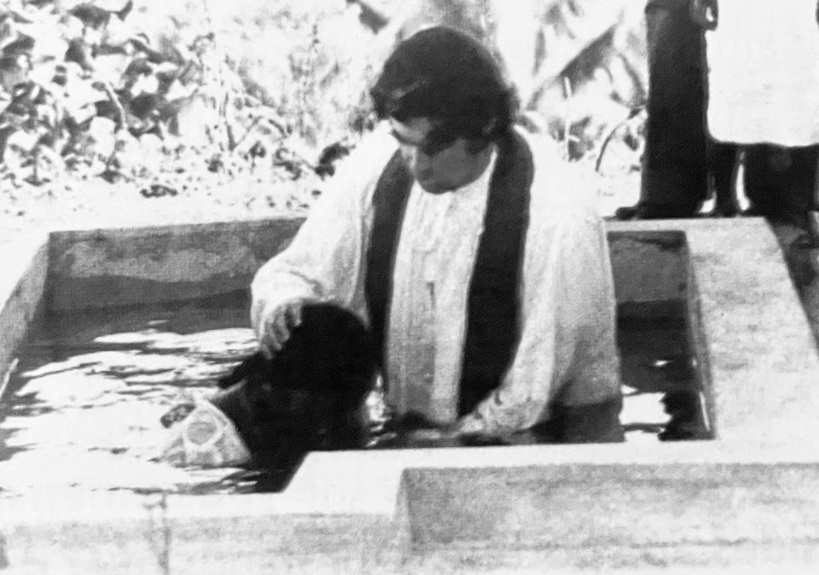“I am becoming more at home with Hindi.” This was how Columban priest, Fr Frank Hoare, described his second year serving in Naleba. We closed off 1975 on a controversial and humbling note and now, stepping into 1976, we continue to journey with Fr Hoare as he learns, adjusts, and grows in his pastoral mission among Indo-Fijian communities in rural Fiji.
When culture and sacrament collide
Fr Frank Hoare found himself navigating deep cultural sensitivities while trying to introduce baptism by immersion to his Indo-Fijian Catholic community in Naleba. We begin on April 18, 1976, where he noted the symbolism of baptism by immersion as recommended by Vatican II, drawing on scripture from Romans 6:4 to highlight its spiritual significance. A concrete baptismal font was constructed with the archbishop’s permission to facilitate this more traditional form of the sacrament. However, objections soon arose. Some men in the congregation were uncomfortable with both genders using the same water for immersion, driven by unspoken, but culturally rooted, concerns around modesty and ritual cleanliness, including the belief that menstrual blood could cause pollution. While these concerns weren’t explicitly stated, they were evident. The debate was only softened when an elder voiced support for the new practice, saying, “If Father blesses this water, it is clean and cannot harm anyone.” Still, compromise was necessary. The solution: ensure the water would be flowing, and conduct baptisms for men before women. “At that time, Hindi films did not show any female nudity,” Fr Hoare said. “Instead, the shapely female form was sexualized by female actresses falling into water and emerging with dress clinging tightly to their skin. “We ensured that a lady emerging from the baptismal font with wet clothes would be quickly wrapped by her sponsor in a large white sheet. “This ensured modesty, and the white cloth also symbolised the new life of Christ which they received in baptism.” By Holy Saturday night, two adult men, two young boys, and two adult women were baptised, setting a precedent for future ceremonies in Naleba.
“There is a child in Dur Sami”
Only just a few days later, Fr Hoare continued to settle into his pastoral rhythm in Naleba, noting that he was becoming more comfortable preaching in Hindi, though it still required preparation. He had been reading about transactional psychology and felt compelled to share the theory with his congregation during a Sunday service. He explained that each person has a “child,” “adult,” and “parent” within them representing playfulness, rational decision-making, and moral judgment, respectively. “The child within us likes to joke and play, the adult within us makes plans and decisions based on reason, and the parent in us acts as a conscience and judge of behavior. “We need all three aspects of the self, but the adult is the most mature of the three.” Trying to illustrate his point, he pointed to a young man and said, “There is a child in him.” Confused stares followed. He then turned to an elderly woman, saying, “There is a child in Nani,” which startled her. The final blow came when he declared, “There is even a child in Dur Sami.” By then, the young men in the church were barely containing their laughter, hands over their mouths and shoulders shaking. Recognising the moment had run its course, Fr Hoare quickly transitioned to his Gospel message.
The only words she said were about his meal
While visiting a Hindu couple in a rural settlement on May 3, Fr Hoare encountered a quiet testament to marital commitment and cultural values. As the wife served him tea, her husband joined the conversation. “We had a fight a few days ago. We are not talking. The only time I speak to him is when I place his meal before him. Then I say, “Here is your meal,” the wife said. When asked why she still spoke those words, she explained that during their wedding, the officiating pundit had told her it was her sacred duty to announce his meal, something she had continued to honour even in silence. Fr Hoare was struck by the weight she gave to that marital instruction, seeing it as a bridge for reconciliation. “It was surely a bridge for reconciliation too. “I hope that some of those whose weddings I have celebrated, remember my advice too!”

